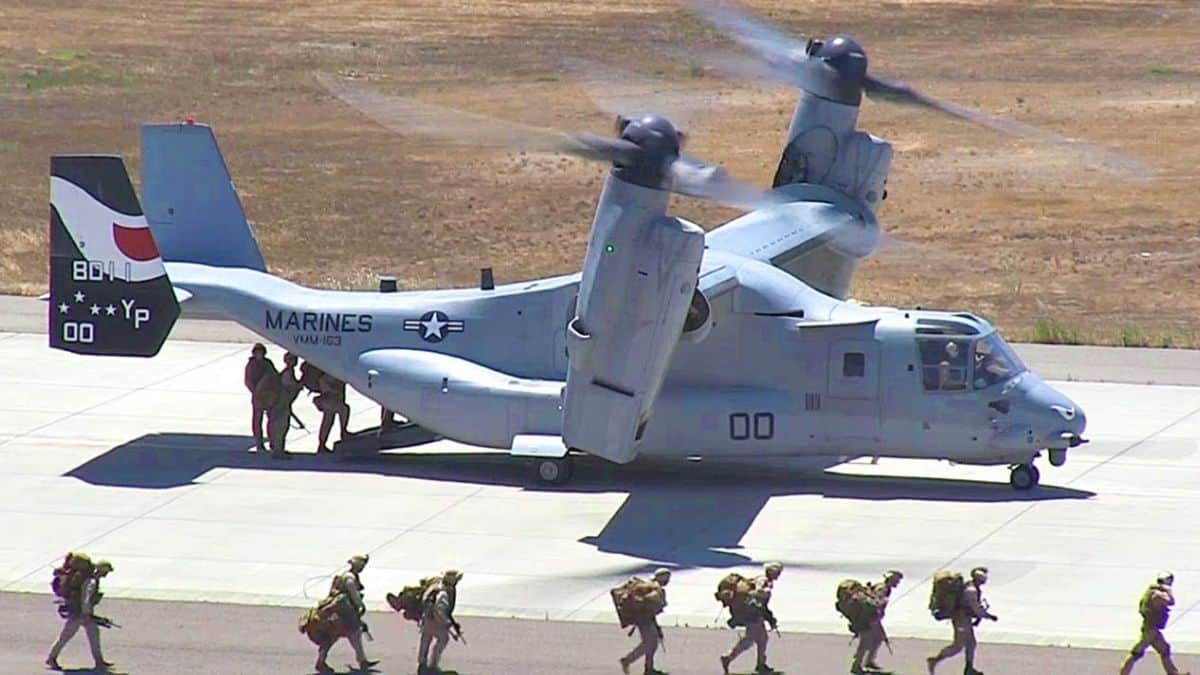Four US Marines were killed when their Osprey aircraft crashed in a Norwegian hamlet near the Arctic Circle

According to authorities, four US Marines were killed when their Osprey aircraft crashed in a Norwegian hamlet near the Arctic Circle during a NATO practice unrelated to the Ukraine conflict.
They died in the crash on Friday night, according to Norwegian Prime Minister Jonas Gahr Stoere. Although the cause remained unknown, Norwegian police reported severe weather in the region.
The Marines from the II Marine Expeditionary Force’s 2nd Marine Aircraft Wing were participating in a NATO exercise dubbed Cold Response.
The Marines’ identities will not be revealed right away, according to the US Defense Department’s protocol of contacting relatives.
The plane in question was an MV-22B Osprey. According to the country’s armed forces, it “had a crew of four and was out on a training mission in Nordland County” in northern Norway.
It was en route to Bodoe, where it was expected to dock sometime after 6 p.m. on Friday. The Osprey was shot down in Beiarn’s Graetaedalen, south of Bodoe. A search and rescue mission was initiated right away, according to police. Police arrived at the scene around 1:30 a.m. Saturday and discovered that the four-person crew had died.
Around 30,000 troops, 220 aircraft, and 50 boats from 27 countries are participating in the Cold Response drill. Finland and Sweden, both non-NATO members, are also taking part. The workouts started on March 14 and will last until April 1.
The cause of the crash has yet to be determined, however, the Norwegian military forces have stated that Cold Response “will continue as planned, with the safeguards we must take owing to the weather.”
According to Norwegian media, a Norwegian rescue chopper spotted the crash scene late Friday, and local Red Cross employees were dispatched to assist authorities on the ground.
In what they described as extremely tough weather conditions early Saturday, Red Cross members drove near to the crash site on scooters and marked the track with GPS for police, according to Norwegian tabloid VG.
“It was a unique night, with a true storm. We were five people driving towards the accident scene. In the highlands, there was one metre of visibility, snow, and a storm “Oerjan Kristensen, the Red Cross team leader, told VG. “It was probably a 30-40 metre per second wind gust. It’s difficult to stay standing when the wind is this strong.”
The possibility of landslides in the highlands, as well as the remoteness of the crash site, are hindering the rescue mission, according to Kristensen.
The cause of the accident is being looked into.
The crash was the subject of a police investigation, and accident commission officials and police representatives were scheduled to be at the scene on Saturday.
“The weather in the area is quite terrible for finishing work at the scene,” Norland police operations manager Ivar Bo Nilsson told reporters.
Despite the crash, Cold Response, according to Lt. Gen. Yngve Odlo, chief of the Norwegian Armed Forces’ operations headquarters, will continue.
“Right now, the entire focus is on wrapping up the rescue operation, taking care of the people, and then returning to normal with causation,” Odlo was quoted as saying by Norwegian public radio NRK.
The first Cold Response drill was held in 2006, and drills are undertaken every two years since then. They are held in Norway’s southeast, centre, and northern regions.


